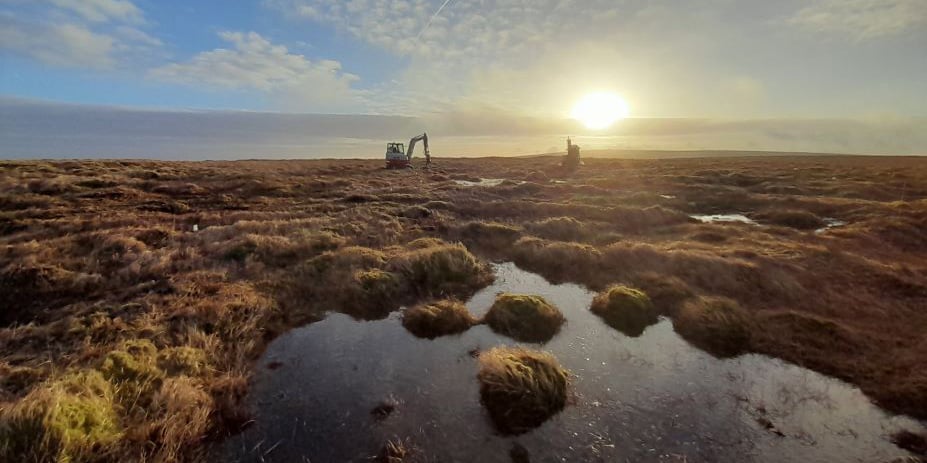The world is in a climate emergency. To act on this and try and limit global warming there are global targets to reduce emissions of greenhouse gases (GHG) such as carbon dioxide and methane.
The Devon Carbon Plan, published in 2022, has a target that Devon will have net-zero carbon emissions by 2050. This means that the total amount of carbon emitted in Devon will be less than or equal to the total amount of carbon removed from the environment in the county. Managing, restoring and creating wildlife habitats all have a key role in helping to meet this target through what is known as carbon sequestration.
All plants absorb carbon dioxide from the atmosphere during photosynthesis. They use the carbon to create glucose to help them grow, and as they grow they absorb and store more carbon. When the plant sheds its leaves, and when it dies, the dead plant matter decomposes to become part of the soil where the carbon continues to be stored.
Although plants naturally emit carbon dioxide through respiration and as they decompose, healthy wildlife habitats generally absorb more carbon than they emit and so act as carbon stores or ‘sinks’.
Unfortunately, when habitats and their soils are disturbed, they can release large amounts of carbon dioxide and no longer act as sinks. This carbon release can be caused by burning heathlands, draining wetlands and ploughing soils. When peatlands dry out, they decompose and release large amounts of both carbon dioxide and methane – another greenhouse gas that is significantly contributing to global warming.
Habitats will absorb, store and emit different amounts of carbon depending on a range of factors such as vegetation, soil type, soil health and management. Well-vegetated and well-managed wildlife habitats with undisturbed healthy soils are generally far better at carbon sequestration than other land uses such as arable and improved grasslands used for agriculture and amenities.
Blanket bogs and mires on peat: Healthy peat is made up of partially decomposed vegetation that stores large amounts of carbon. As a result, peat habitats can store the most carbon per hectare. However, when peatlands degrade they emit carbon and today many peatlands are degrading because in the past they were drained or dug up to be used as fuel or compost.
Deep peat is found on Dartmoor and Exmoor and shallower peat is found under acidic wetland mires in areas like the Blackdown Hills. See Heath, bog, mire and species-rich rush pasture mosaics for more information.
Woodlands: Woodlands are the next best carbon store and capture the most carbon per hectare. Trees are great at capturing and storing carbon as they’re big, complex and long-lived. They reach their carbon-storage peak at between 25 and 40 years old.
Wet woodlands: Wet woodlands on peaty soils can store very high amounts of carbon and should be protected. See Wet woodland for more information.
Species-rich permanent grasslands: These grasslands can store significant amounts of carbon as long as they’re not disturbed.
Marine habitats: There is still much we do not understand about carbon cycling in many marine and coastal habitats. However, saltmarsh, seagrass and kelp beds can store and sequester significant quantities of carbon per hectare. See Coast for more information.
There’s more information on how these habitats sequester carbon in Find out more.

